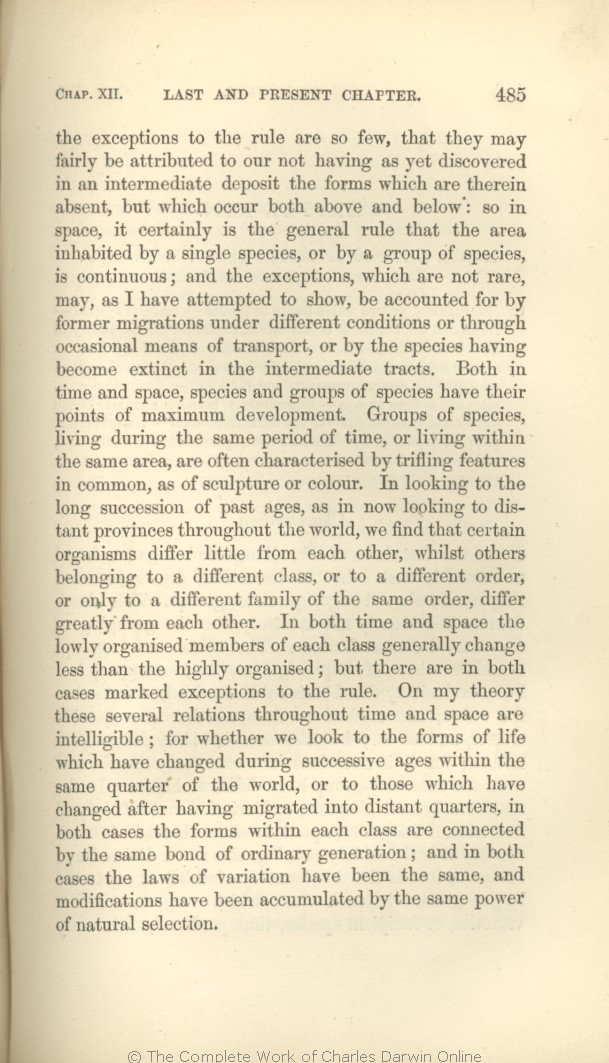the
exceptions | exceptions 1859 1860 1861 1866 1869 | | apparent exceptions 1872 |
| the 1859 1860 1861 1866 | | certain 1869 1872 |
| therein 1859 1860 1861 1866 | therein 1869 1872 |
| absent, 1859 1860 1861 1866 | | absent 1869 1872 |
| but 1859 1860 1861 1866 |
| in it, but 1869 1872 |
| both above 1866 1869 1872 | | above 1859 1860 1861 |
| continuous; 1859 1860 1861 1866 | | continuous, 1869 1872 |
| former migrations 1866 1869 1872 |
| migration at some former period 1859 1860 1861 |
| conditions 1859 1860 1861 1866 | | circumstances, 1869 1872 |
| through 1866 1869 1872 | | by 1859 1860 1861 |
| or 1866 1869 1872 | | and 1859 1860 1861 |
| living during the same 1866 1869 1872 |
| belonging either to a certain 1859 1860 1861 |
| living within the same 1866 1869 1872 |
| to a certain 1859 1860 1861 |
| features 1866 1869 1872 | | characters 1859 1860 1861 |
| past ages, 1866 1869 1872 | | ages, 1859 1860 1861 |
| now 1859 1860 1861 1866 1869 | now 1872 |
| certain organisms 1866 |
| some organisms 1859 1860 1861 |
| species in certain classes 1869 1872 |
| little 1866 1869 1872 | | little, 1859 1860 1861 |
| from each other, whilst others belonging to a different 1866 |
| whilst others belonging to a different 1859 1860 1861 |
| from each other, whilst others in a different 1869 |
| from each other, whilst those in another 1872 |
| to 1859 1860 1861 1866 | | only in 1869 1872 |
| order, or only to a different family 1866 |
| order, or even only to a different family 1859 1860 1861 |
| family 1869 |
| section 1872 |
| greatly from each other. 1866 1869 1872 |
| greatly. 1859 1860 1861 |
| lowly organised 1866 1869 1872 | | lower 1859 1860 1861 |
| highly organised; 1866 1869 1872 | | higher; 1859 1860 1861 |
| On my 1859 1860 1861 1866 |
| According to our 1869 1872 |
| theory 1859 1860 1861 1866 1869 | | theory, 1872 |
| forms 1859 1860 1861 1866 1869 | | allied forms 1872 |
| ages 1859 1860 1861 1866 | | ages, 1869 1872 |
| within the same quarter of the world, 1859 1860 1861 1866 |
| OMIT 1869 1872 |
| the 1859 1860 1861 1866 1869 | | they 1872 |
| forms within each class are 1866 1869 |
| forms within each class have been 1859 1860 1861 |
| are 1872 |
| and 1866 1869 |
| and the more nearly any two forms are related in blood, the nearer they will generally stand to each other in time and space; 1859 1860 1861 |
| OMIT 1872 |
|









